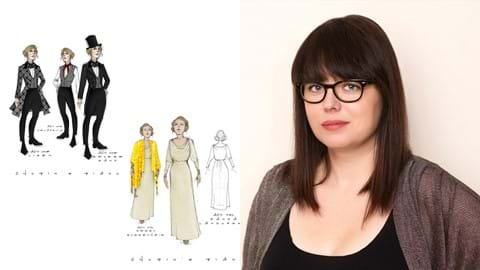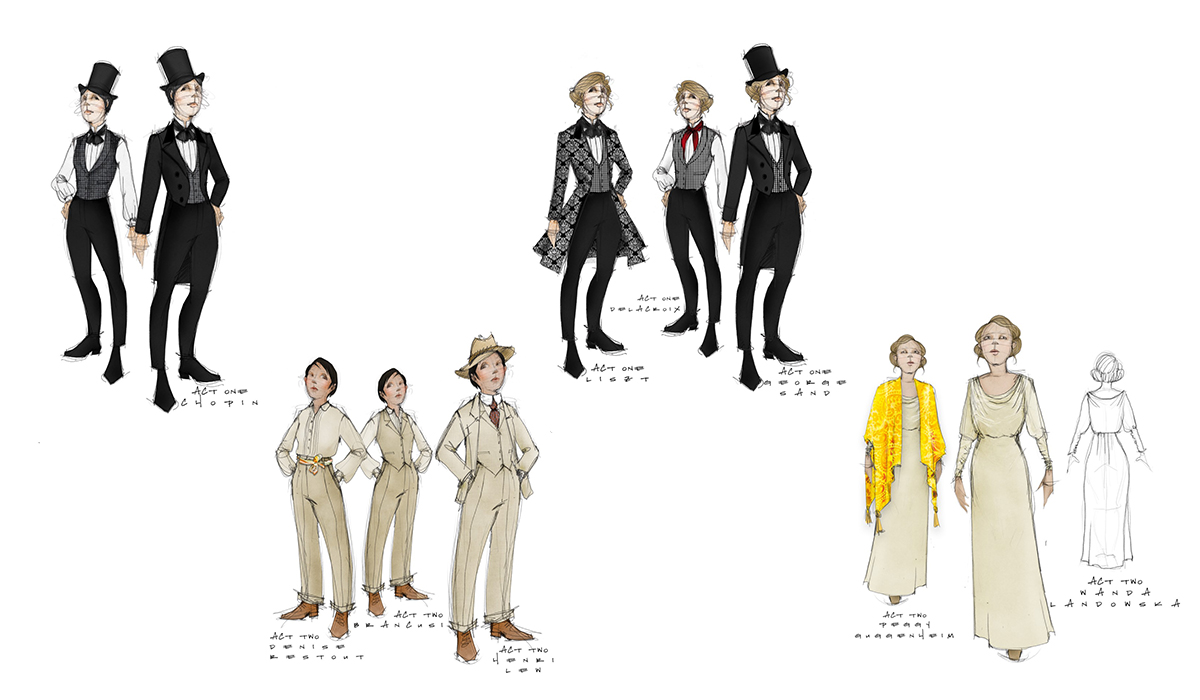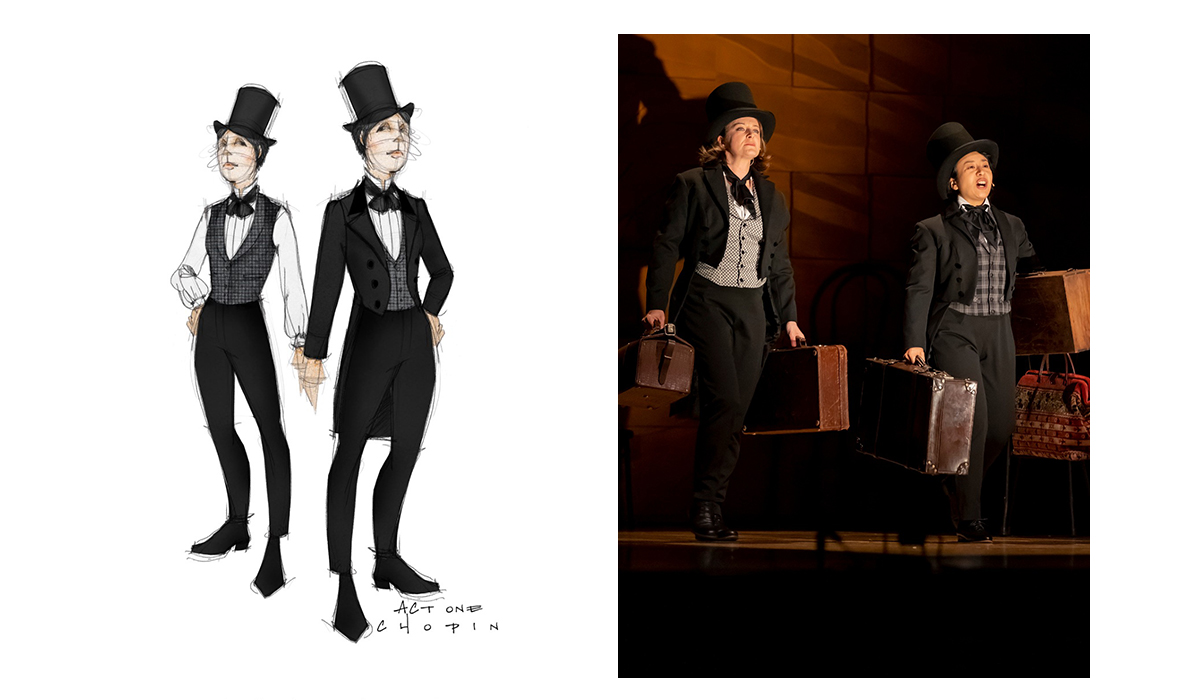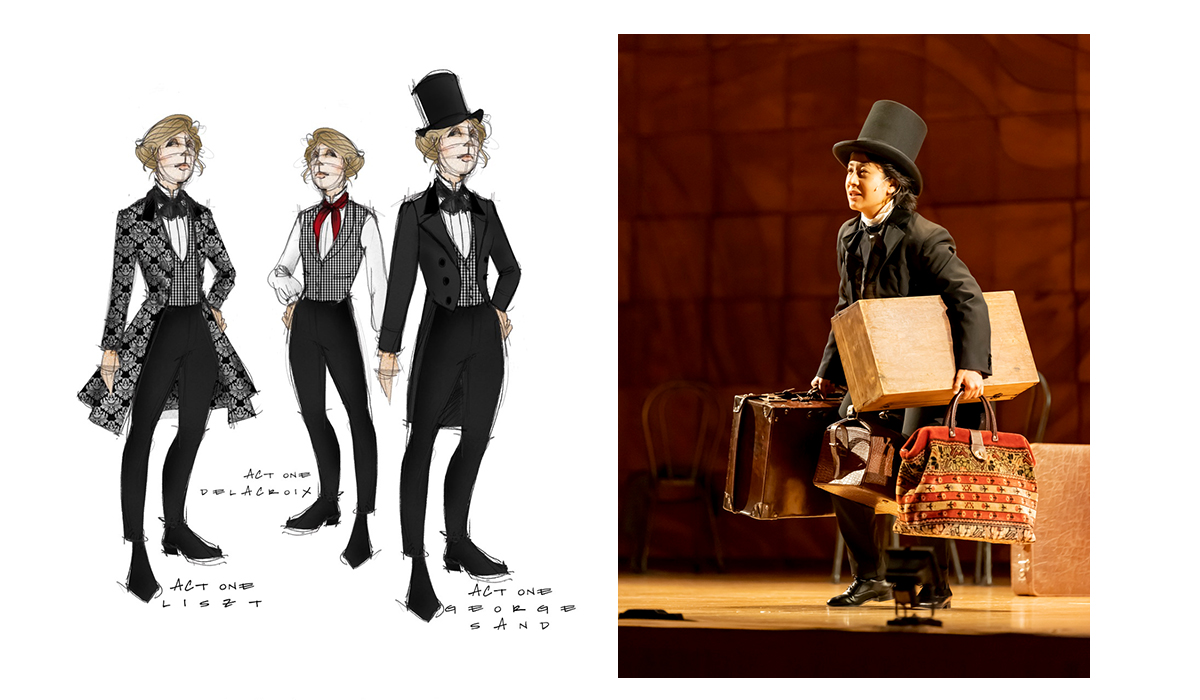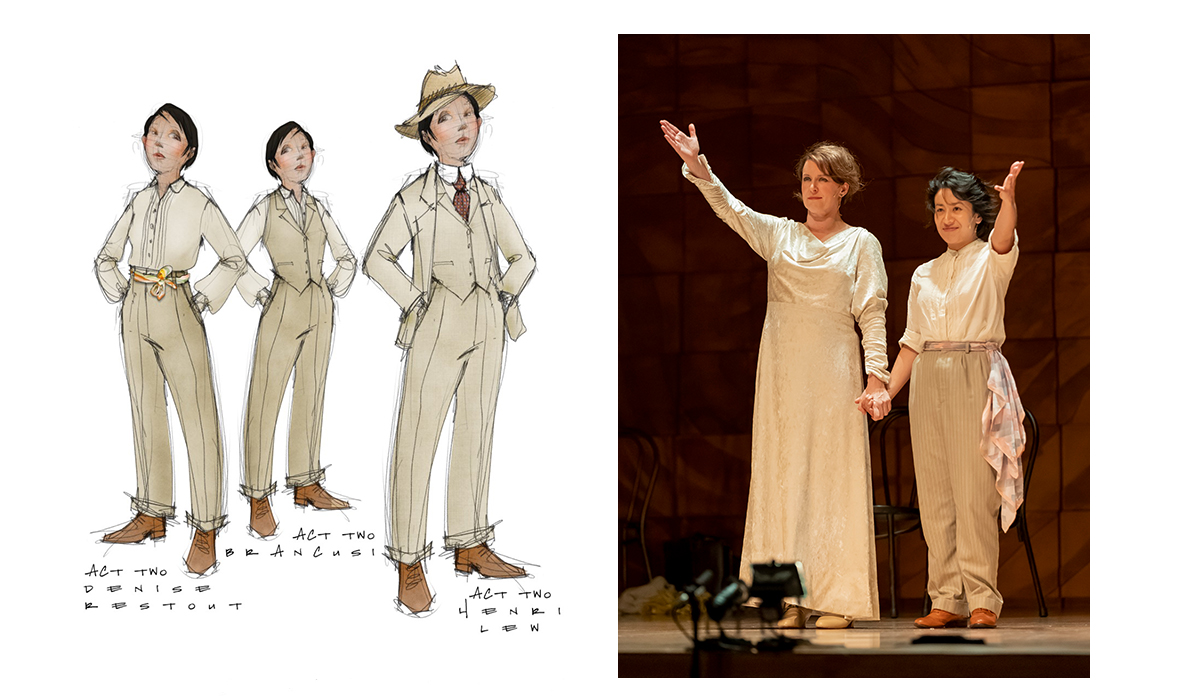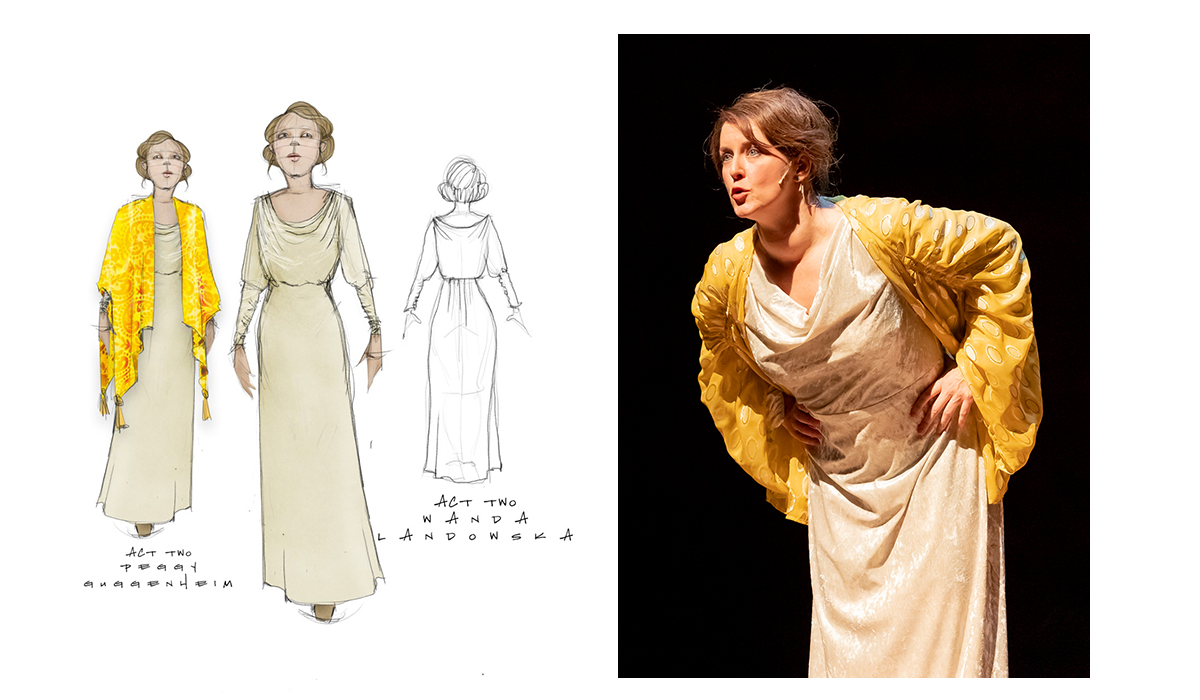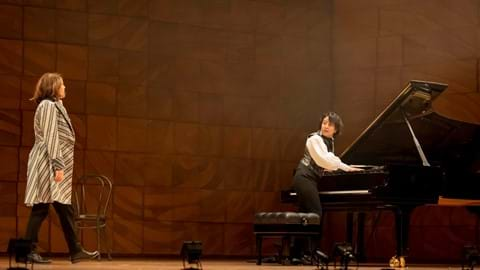With over 20 years of experience at her back and having worked with the likes of the Commonwealth Games, ACMI, the Australian National Museum and Melbourne Theatre Company, we were utterly thrilled to have award-winning costume designer Christina Smith jump on board for the production of Chopin's Piano.
We caught up with Christina to learn about her work process, where she drew inspiration from for her work on Chopin's Piano, the hurdles she faces on productions and how she overcomes them, and much more. She even shared her design illustrations, which you can see paired with the finished product below.
What were your initial thoughts when you learned about the Chopin’s Piano production?
I’m always delighted at the opportunity to design to music! Music is such a gift to a designer as it speaks to the subtext of a work, offering a more lyrical gateway into the piece than text alone. Being able to conjure costumes through the act of drawing to music was too good an opportunity to pass up. I was also intrigued by the overall concept including having to design for a concert pianist which was a first for me. In addition, the casting was inspiring and it was thrilling to learn that two women were to be cast as the performers.
What are the first steps you take when starting a project?
The text is my launchpad, and I need to understand both how it works and how it feels in order to begin my design process. There are logistic and pragmatic concerns related to the structure, but more crucial is understanding what the words tells us about the characters and the piece as a whole. There are clues embedded in the dialogue and in the form of the language itself that require considered and repeated interrogation.

